The Japanese restaurant where diners binge-eat 500 bowls of 'wanko soba' noodles in one sitting
Don’t let the name put you off: the world’s craziest noodle-eating challenge is an ode to traditional Japan
Your support helps us to tell the story
From reproductive rights to climate change to Big Tech, The Independent is on the ground when the story is developing. Whether it's investigating the financials of Elon Musk's pro-Trump PAC or producing our latest documentary, 'The A Word', which shines a light on the American women fighting for reproductive rights, we know how important it is to parse out the facts from the messaging.
At such a critical moment in US history, we need reporters on the ground. Your donation allows us to keep sending journalists to speak to both sides of the story.
The Independent is trusted by Americans across the entire political spectrum. And unlike many other quality news outlets, we choose not to lock Americans out of our reporting and analysis with paywalls. We believe quality journalism should be available to everyone, paid for by those who can afford it.
Your support makes all the difference.At Azumaya, a 100-year-old restaurant in Morioka, northern Japan, the challenge is to slurp down hundreds of bowls of wanko soba and still leave breathing.
The capital of Iwate Prefecture in Tohoku is famous as the home of the worm-like buckwheat noodle, a local delicacy served in bite-size portions. And the tradition is to devour as many small bowls as possible, often in lunatic quantities. This is, I soon learn, a place obsessed with eating noodle.
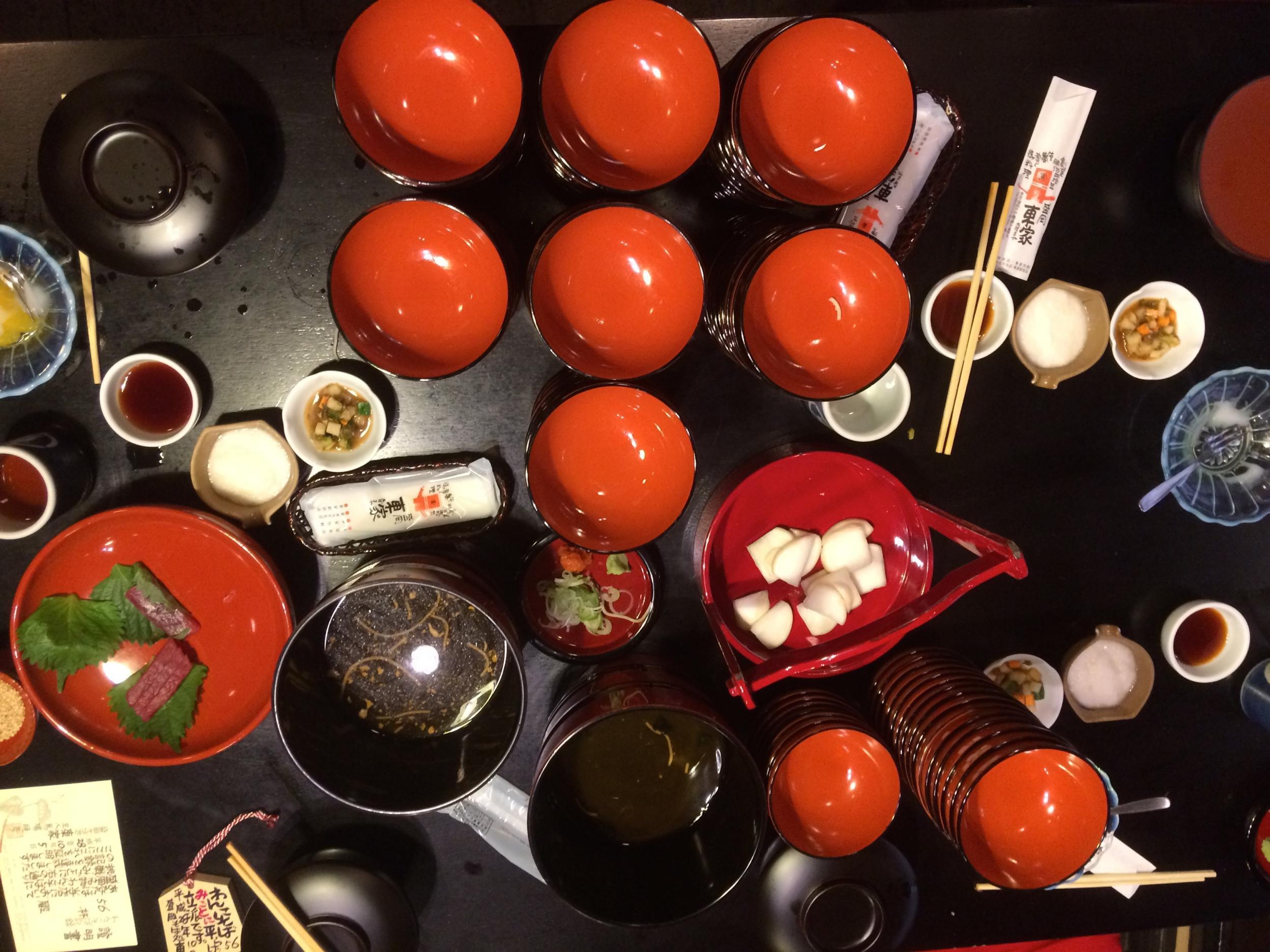
The perils of “too much noodle”
As I enter the lantern-lit backstreet restaurant, it becomes apparent just how serious an undertaking this is. Manager Takahashi Masaru, slight and with no pudding-like paunch, tells me he eats 200 bowls in one sitting twice a month. The national record stands at 570, he explains matter-of-fact, an achievement made by a toothpick-thin female who inhaled the equivalent of 38 normal-sized bowls before, presumably, being carted off to rehab. As Takahashi says: “Too much noodle.”
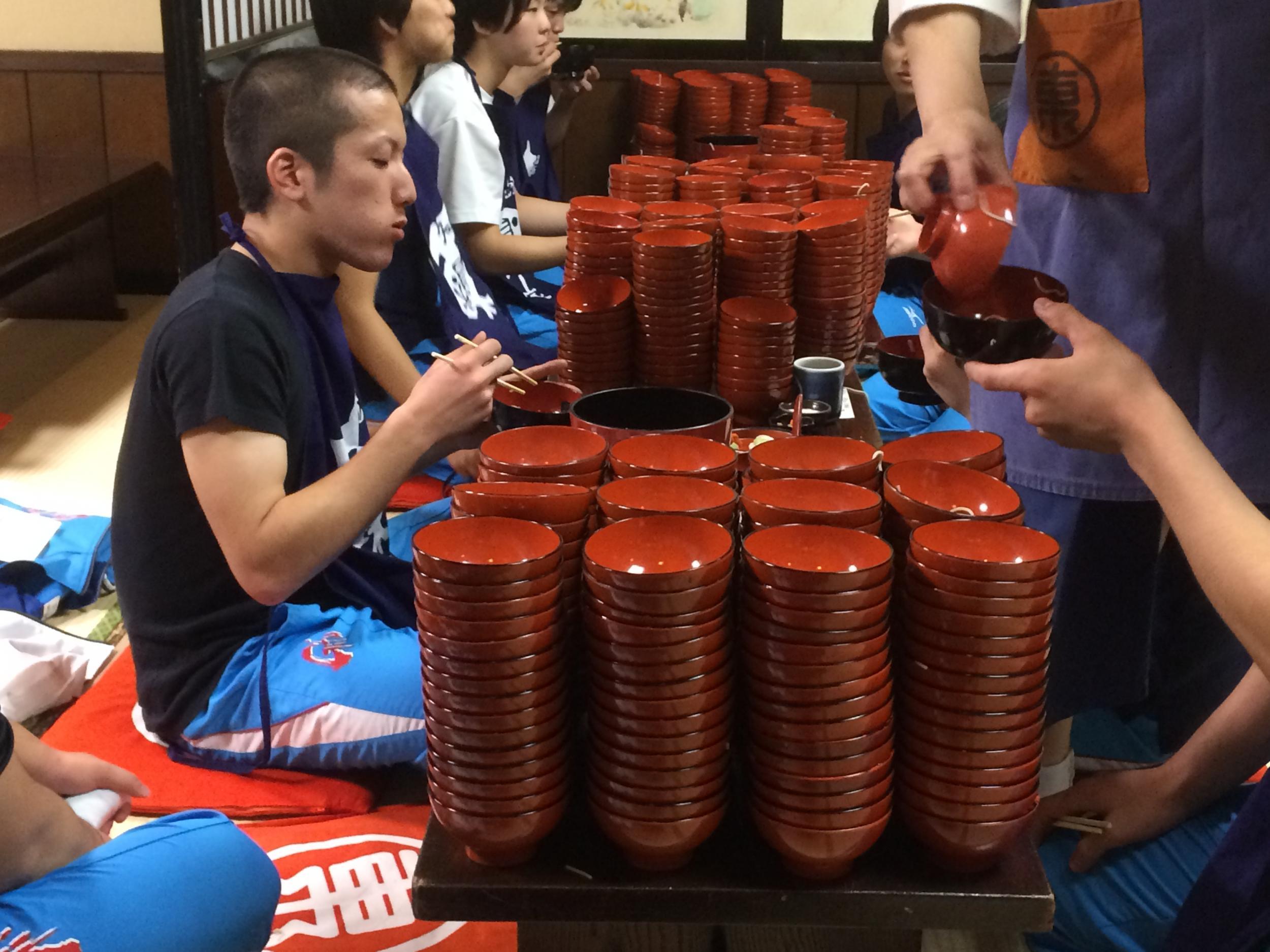
In Japan, appearances are everything, but that’s not always the case when it comes to food in Tohoku. Here they have a tendency to create the extraordinary and out-of-this-world from the banal. With so much competition for tourist yen from Tokyo, Kyoto, and Osaka in the south, the region’s prefectures often take their hunt for food adventures to silly extremes. And restaurateurs are more than happy to oblige.
In Akita, for instance, they pluck chickens and serve them sliced and raw with wasabi, while in the mountains near Lake Tawaza, they upgrade everyday rice into kiritanpo, sausage-shaped skewers of barbecued goodness. In Aomori, farther north, it’s possible to gently stew in the nude in steaming cedar wood tubs full of aromatic bobbing apples (complemented, naturally, by off-pink plums in the male locker room).
Or you can indulge in such oddities as abalone heart, sea pineapple, acorn barnacle, or chewy scallop skin. And here in Morioka, the self-proclaimed world soba capital, the humdrum noodle turns theatrical spectacle. Even for the seasoned traveller to Japan, the region tastes and smells like a food theme park.
The feudal lord of the noodles
There’s no denying Morioka is incredibly well suited for those coming to slurp soba. The practice dates back to the 17th century, when a ravenous feudal lord arrived at an inn demanding to be fed. With no food available other than buckwheat noodles, the helpless owner obliged, piling up bowl after bowl as the landowner wolfed them down.
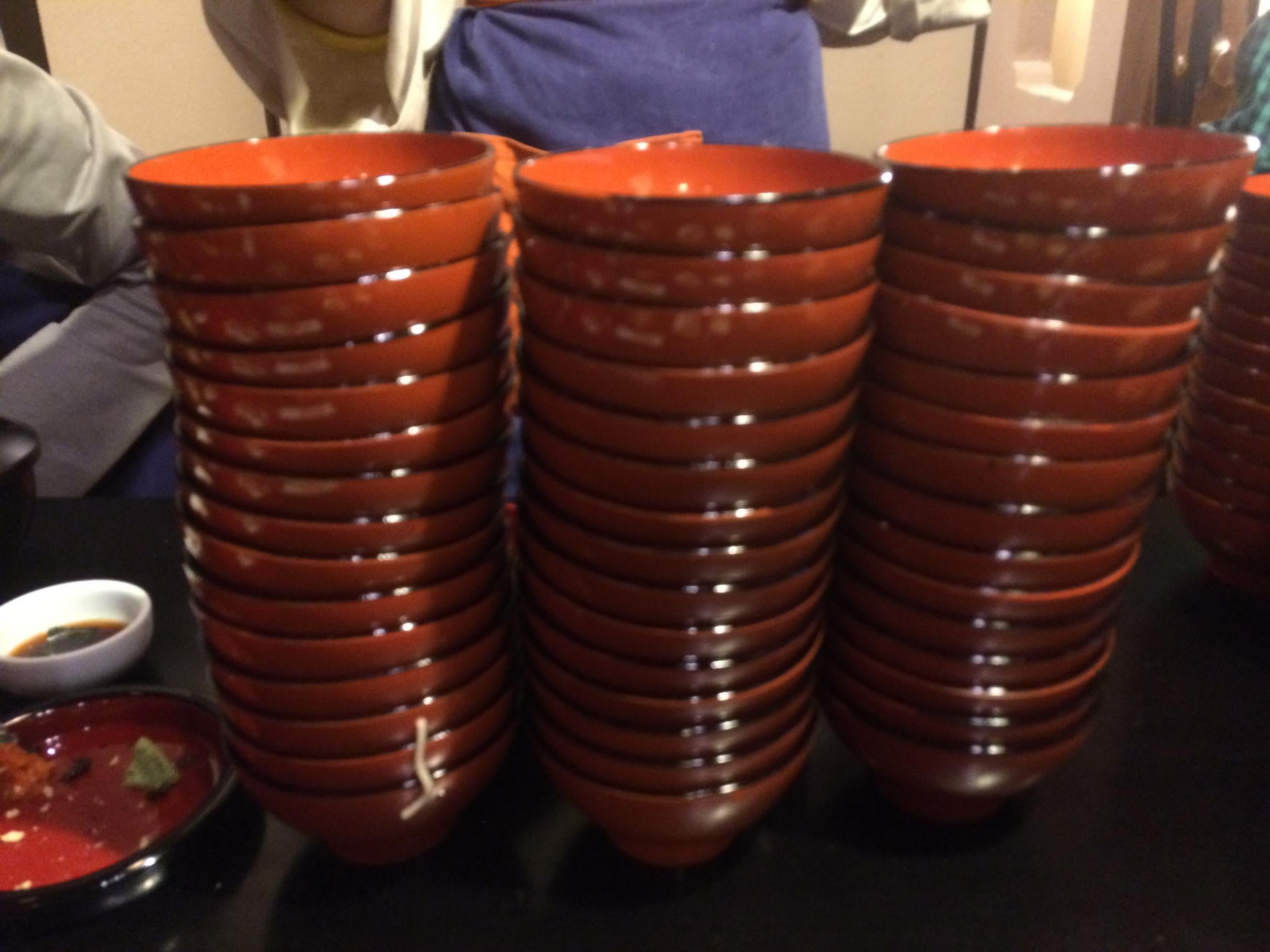
He loved them, of course, and hundreds of wanko restaurants have sprung up since, the name itself a portmanteau of “wan” (bowl) and “ko” (baby). Some say the 300-year-old tradition is true, some say it’s hogwash. Either way, don’t go looking for a moral in the story. You won’t find one.
One problem: They taste awful
My own attempt at the lord’s challenge doesn’t start so well. The first issue is the taste. Flash-boiled and left swimming in a tepid soupçon of fish and kelp stock, the noodles slip down easily enough, but hardly revel in Michelin-starred glory. What also takes some getting used to is just how competitive it is. The tables around me host an 18-strong party of grease-chinned Kendo athletes from Gifu prefecture already snout-deep in their bowls.
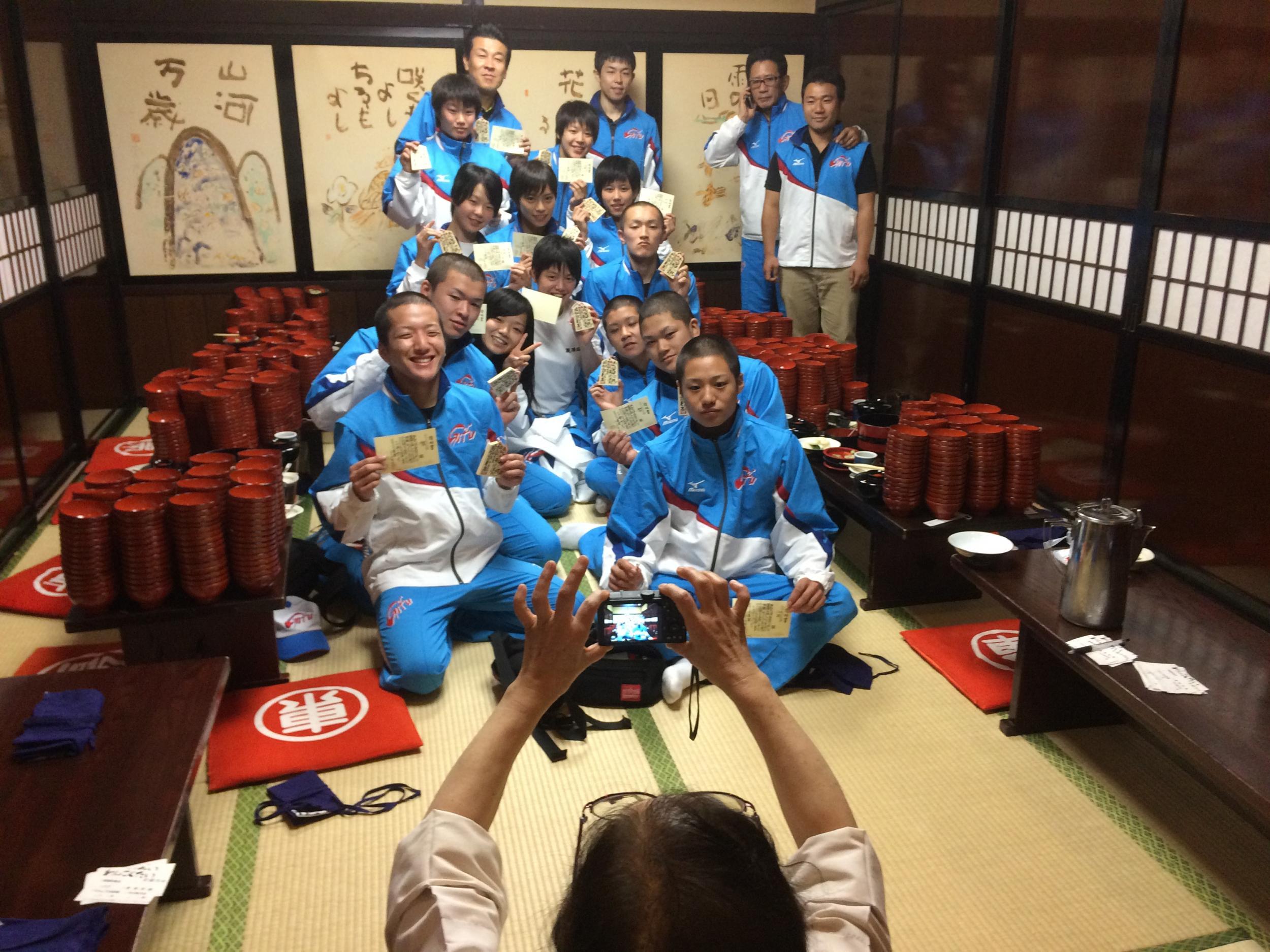
“Seventy eight!” one shouts. “One hundred and one,” says another. “One hundred and twenty two,” adds a third. The numbers keep coming. And the bowls, refilled with a dull splat, keep getting emptied.
Through a newcomer’s eyes, it must seem like culinary nihilism. To reach such nonsensical figures requires Sumo levels of dedication and the ability to swallow your own disgust. Chewing is optional; no bathroom breaks are allowed; if you throw up you have to start again; and you can only call it quits after replacing the lid on your bowl before the ninja-quick servers refill it. “Move fast,” says Takahashi, instructing me like a learned master. “Your stomach won’t realise you are full.”
Hitting the wanko wall
Heeding this advice, I tie a woodblock-printed bib around my neck, take a deep breath, and devour the first 15. Then another dozen. Then another. Around me competitors eat, slurp, repeat, their eyes dancing wildly from chopstick to bowl to server.
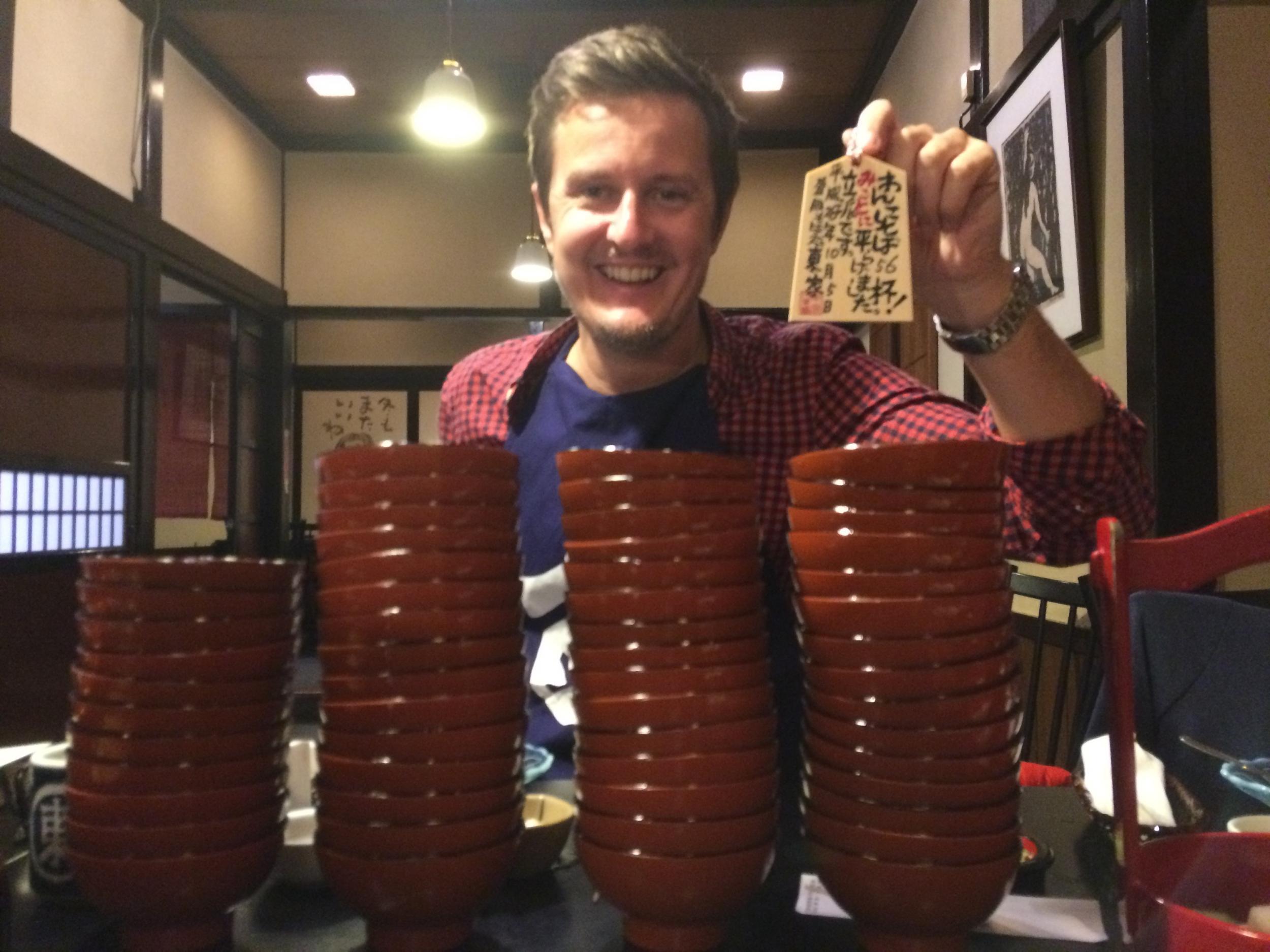
As the dishes stack up, bellies fill, and swollen-cheeked diners turn pallid-yellow before conceding. The undefeated, emboldened but sweating profusely, snort and dig deep. The truly committed stand, jiggling their stomach in the hope of filling every orifice, to find an extra inch in a pancreas or intestine somewhere for extra noodle.
For my part, I start hitting the wanko wall soon after 50. Sweat glistens on my brow and the crest of my stomach pops over my belt. Around the tatami-matted room, wiped-out dinner dates and companions stare straight on, as though into the depths of an abyss, in the knowledge they have done a very bad thing.
The restaurant has spooned out 700kg of soba tonight and I join the overfed, off-white and dazed, beaten by 60 bowls. It’s an acceptable number for an embarrassed foreigner like me. Nevertheless, this is just the beginning: the pincer-like click-clack of chopsticks will continue long into the night. Because there is plenty more wanko soba to eat.
Travel essentials
Getting there
Morioka is a three-hour bullet train ride on the JR Tohoku Shinkansen from Tokyo (jreast.co.jp). Tickets cost ¥8,420 (approx. £63) one-way and double for a return. Better, use a JR Rail Pass to save oodles of cash, but note you can only buy the pass outside of Japan.
Eating there
The all-you-can-eat wanko soba challenge at Azumaya costs ¥3,240 (approx. £24) and comes with nine side dishes, including tuna sashimi, shiitake mushrooms, and other specialities (wankosoba-azumaya.co.jp).
More information
seejapan.co.uk; japan-experience.com
Click here to view tours and cruises of Japan, with Independent Holidays

Join our commenting forum
Join thought-provoking conversations, follow other Independent readers and see their replies
Comments